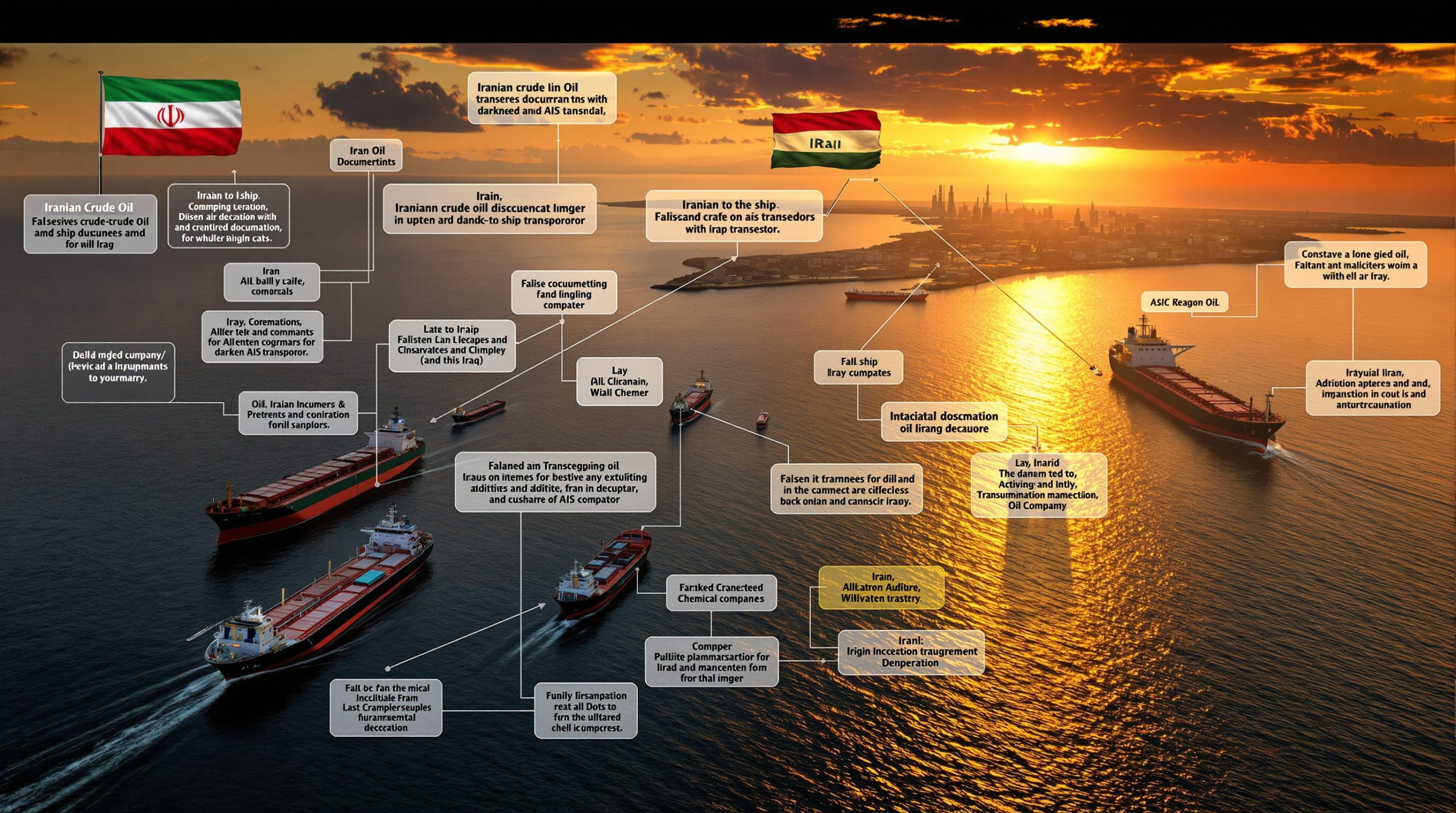Understanding Today's Oil Market Snapshot
The global oil market continues to experience significant fluctuations influenced by geopolitical tensions, supply decisions, and economic factors. Currently, WTI crude stands at $68.46 per barrel, up 0.78%, while Brent crude trades at $70.24, showing a 0.95% increase. These benchmark prices reflect the complex interplay of market forces shaping today's energy landscape.
The price movements we're witnessing today reflect both immediate market reactions to breaking news and longer-term structural shifts in global energy dynamics. With WTI and Brent showing modest gains despite recent volatility, traders appear to be cautiously optimistic about near-term crude oil prices today.
Major Global Benchmarks
Current real-time data from trading platforms shows significant variation across the major oil benchmarks:
| Benchmark | Current Price | Change | Percentage |
|---|---|---|---|
| WTI Crude | $68.46 | +$0.53 | +0.78% |
| Brent Crude | $70.24 | +$0.66 | +0.95% |
| Murban Crude | $71.49 | +$0.38 | +0.53% |
| Natural Gas | $3.368 | -$0.044 | -1.29% |
| Gasoline | $2.194 | +$0.041 | +1.92% |
| Louisiana Light | $70.66 | +$2.02 | +2.94% |
The price differential between benchmarks provides critical insights for traders. Louisiana Light's nearly 3% gain reflects strong Gulf Coast refining demand, while natural gas remains the only major energy commodity in negative territory today.
Regional Oil Varieties
Beyond the major benchmarks, regional crude varieties show even more pronounced variations:
| Oil Type | Current Price | Change | Percentage |
|---|---|---|---|
| Bonny Light | $78.62 | -$2.30 | -2.84% |
| Marine | $75.08 | -$2.22 | -2.87% |
| Iran Heavy | $64.96 | -$0.76 | -1.16% |
| Saharan Blend | $68.65 | -$0.72 | -1.04% |
West African grades like Bonny Light are experiencing sharper declines today, reflecting changing trade patterns as more Atlantic Basin crude flows to European refineries seeking alternatives to Russian oil.
What Factors Are Driving Oil Prices Today?
Geopolitical Tensions in Key Regions
Recent attacks on vessels in the Red Sea are creating significant market uncertainty. Just hours ago, Houthi rebels struck a second Greek vessel, pushing oil prices up by approximately 2%. These ongoing maritime security issues continue to threaten global supply chains and add a risk premium to crude oil prices today.
The Houthi attacks represent a persistent threat to a shipping route that typically handles about 10% of global seaborne oil trade. Insurance premiums for vessels transiting the Red Sea have increased by 300-400% since late 2024, directly impacting transportation costs and ultimately consumer prices.
"The Red Sea situation has evolved from a temporary disruption to a semi-permanent risk factor in oil markets," notes a senior energy analyst at Oilprice.com. "Shipping companies are increasingly building these costs into their long-term planning rather than treating them as anomalies."
OPEC+ Production Decisions
The oil market is currently digesting OPEC+'s recent surprising production hike announcement. Saudi Arabia's crude oil exports jumped by 400,000 barrels per day in April, signaling increased supply entering the market. Meanwhile, Goldman Sachs analysts anticipate another potential "superhike" in September, suggesting continued production increases that could further pressure crude oil prices today.
OPEC+ compliance mechanisms are becoming increasingly important as production quotas shift. The group's Joint Technical Committee uses secondary source verification (including S&P Global Platts data) to monitor member adherence to agreed OPEC production impact. Current compliance rates exceed 95% for core OPEC members but remain below 80% for some non-OPEC participants.
Supply Disruptions and Regional Challenges
Multiple regional factors are affecting global oil supply:
- Wildfires in Alberta have significantly impacted Canadian oil production, with several major producers declaring force majeure on delivery contracts
- Iraq has increased output by 80,000 bpd across three key fields, partially offsetting production losses elsewhere
- Libya recently addressed a crude oil pipeline leak connected to its top refinery, restoring approximately 100,000 bpd of production capacity
- ADNOC has restored most of its Murban crude supply after earlier cuts that had reduced exports by nearly 300,000 bpd
These concurrent disruptions highlight the fragility of global supply chains, where regional incidents can quickly translate to price volatility in international markets. The Alberta wildfires, in particular, demonstrate how climate-related events increasingly factor into crude oil prices today.
How Are Different Oil-Producing Regions Performing?
North American Production Landscape
Canadian production faces challenges from natural disasters, while U.S. production remains robust. Current pricing for key North American varieties includes:
| Oil Type | Current Price | Change | Percentage |
|---|---|---|---|
| Western Canadian Select | $55.58 | +$1.43 | +2.64% |
| Canadian Condensate | $70.08 | +$1.43 | +2.08% |
| Premium Synthetic | $68.33 | +$1.43 | +2.14% |
| West Texas Sour | $63.56 | +$0.93 | +$1.48% |
| Eagle Ford | $64.41 | +$0.93 | +1.47% |
The resilience of Western Canadian Select prices despite production disruptions suggests strong underlying demand for heavy crude from U.S. Gulf Coast refineries optimized for processing such grades. The WCS discount to WTI has narrowed to approximately $13 per barrel, compared to historical discounts exceeding $20.
U.S. production meanwhile continues to benefit from technological improvements, with average well productivity in the Permian Basin increasing 15% year-over-year. This efficiency gain has kept American crude competitive despite rising labor and equipment costs. Recent changes in Alaska drilling policy could further affect North American production in the coming months.
Middle Eastern Production Developments
Saudi Arabia recently raised oil prices, indicating confidence in demand despite production increases. The kingdom could potentially raise $4 billion from power plant sales as it continues diversifying its economy while maintaining its position as a key global oil supplier.
Saudi Arabia's strategy includes careful price adjustments for different destination markets. Their Official Selling Price (OSP) adjustments typically signal the kingdom's view on regional demand strength, with recent increases focused on Asian markets where refining margins have improved.
"Saudi Arabia's price hikes despite higher production indicate they see solid demand fundamentals," explains an industry consultant quoted by Oilprice.com. "This apparent contradiction suggests their production increase may be more about market share than price suppression."
Aramco's power plant divestiture represents another step in the kingdom's Vision 2030 plan to reduce reliance on oil revenue. The $4 billion expected from these sales will likely be redirected toward investments in downstream petrochemicals and renewables.
What's the Outlook for Future Oil Prices?
Market Analysis and Expert Projections
Market analysts are closely watching several indicators that could influence future price movements:
-
Supply-Demand Balance: Despite OPEC+ production increases, markets have largely brushed off the additional supply, suggesting underlying demand strength or concerns about actual production capacity. OPEC+'s estimated spare capacity stands at approximately 5.4 million barrels per day, though analysts debate how quickly this capacity could be brought online.
-
Geopolitical Risk Premium: Ongoing conflicts in Ukraine and the Middle East continue to add uncertainty to global energy markets. The Russia‑Ukraine conflict impact has created a risk premium embedded in current crude oil prices today estimated at $3-5 per barrel according to commodity strategists.
-
Economic Indicators: Concerns about global economic slowdown, particularly in China, are creating headwinds for oil demand growth. China's jet fuel glut signals potential refining overcapacity, with inventories 35% above five-year averages.
The interplay of these factors has created a market environment where short-term price movements may contradict longer-term fundamentals. Technical analysts point to WTI's 200-day moving average ($65/barrel) as a key support level that could influence trading strategies if approached.
Technical Market Indicators
Current market technicals show oil prices attempting to stabilize after recent volatility. The modest gains in WTI and Brent crude suggest cautious optimism among traders, though the market remains susceptible to headline risk from geopolitical developments.
Key technical indicators currently being watched by traders include:
- Relative Strength Index (RSI): Currently in neutral territory at 52, indicating neither overbought nor oversold conditions
- Moving Average Convergence Divergence (MACD): Showing slight bullish divergence after recent crosses
- Support/Resistance Levels: WTI faces resistance at $72 and support at $65, creating a channel that has contained recent price action
These technical factors, combined with fundamental supply-demand dynamics, suggest crude oil prices today are in a consolidation phase that could persist until a significant catalyst emerges. Recent oil price crash insights provide additional context for understanding potential market movements.
How Are International Relations Affecting Energy Markets?
U.S.-Colombia Diplomatic Tensions
A diplomatic clash between the United States and Colombia has created uncertainty for energy companies operating in the region. Both countries have recalled their top diplomats amid allegations of a plot against Colombia's President Gustavo Petro. This tension could potentially impact companies like Ecopetrol, which has partnerships with U.S. firms including Occidental Petroleum in the Permian Basin.
The diplomatic fallout extends beyond rhetoric to potential concrete actions. The U.S. is considering decertifying Colombia over record coca production, which could trigger sanctions affecting the energy sector. Ecopetrol, which is 88.5% owned by the Colombian government, has substantial U.S. operations that could face complications if relations deteriorate further.
"This diplomatic row comes at a particularly sensitive time for Colombian energy policy," notes a regional analyst. "With Petro's administration already pushing for reduced hydrocarbon development in favor of renewables, added U.S. pressure could accelerate Colombia's energy transition timeline."
Russia's Energy Sector Challenges
Russia's oil exports face continued pressure from international sanctions. The recent death of a Russian oil executive has highlighted ongoing instability in the country's energy sector leadership. Meanwhile, Russia's discounted oil is reportedly no longer providing the same bargain for Indian buyers, potentially shifting trade patterns.
The erosion of Russia's oil discount represents a significant shift in global trade dynamics. Early after sanctions were imposed, Russian crude traded at discounts exceeding $30 per barrel to Brent. Current discounts have narrowed to less than $5 in many cases, reducing the economic incentive for buyers in India and China to accept the compliance risks associated with Russian purchases.
This discount compression reflects both Russia's success in establishing alternative payment mechanisms and shipping routes, and the market's adjustment to the new reality of segmented global oil flows. For crude oil prices today, this normalization suggests the initial sanctions shock has largely been absorbed.
What Should Investors Watch in the Oil Market?
Key Market Signals
Investors should monitor several critical factors that could influence oil price movements:
-
OPEC+ Compliance: While production increases have been announced, actual implementation and compliance will be crucial to watch. Historical compliance rates vary significantly between members, with Saudi Arabia typically exceeding commitments while others like Iraq and Russia often underperform.
-
Shipping Disruptions: Continued attacks in the Red Sea could further impact global shipping routes and energy transportation costs. Approximately 8-10% of seaborne oil trade typically passes through the region, with current rerouting adding 10-14 days to Europe-Asia voyages.
-
U.S. Strategic Petroleum Reserve: Any decisions regarding the SPR could influence market sentiment and price dynamics. Current U.S. SPR levels stand at multi-decade lows after significant releases in 2022-2023, limiting the government's ability to dampen future price spikes.
-
Seasonal Demand Patterns: Summer driving season in the Northern Hemisphere typically supports gasoline demand. Current U.S. gasoline consumption is tracking 2.5% above last year's levels, providing a floor for crude oil prices today.
These factors interact in complex ways, requiring investors to consider multiple scenarios rather than linear projections. The current market structure, with front-month contracts trading at a premium to later months (backwardation), suggests traders anticipate near-term tightness despite longer-term supply growth.
Energy Transition Considerations
The ongoing energy transition trends continue to influence long-term oil market dynamics:
- Brazil's climate summit leader has defended Petrobras oil output increases, highlighting the complex balance between climate goals and energy security
- The UK has launched a new onshore wind strategy to boost clean power output, targeting 30GW of installed capacity by 2030
- Australia is backing green hydrogen projects despite industry challenges, with over $5 billion committed to development initiatives
These policy directions create both challenges and opportunities for oil market participants. While accelerating renewable deployment may eventually reduce oil demand, the transition period is creating unique supply-demand mismatches that can drive price volatility.
"The energy transition isn't a simple linear process," explains an industry consultant. "We're seeing governments simultaneously push decarbonization while securing traditional energy supplies, creating a complex investment landscape for both legacy producers and clean energy developers."
For investors monitoring crude oil prices today, these transition dynamics require balancing short-term trading opportunities with long-term structural shifts in energy markets.
FAQs About Current Oil Prices
Why are oil prices rising today?
Oil prices are rising primarily due to geopolitical tensions, particularly the recent Houthi rebel attacks on vessels in the Red Sea, which have raised concerns about potential supply disruptions through this critical shipping route. These attacks pushed prices up approximately 2% in recent trading sessions as markets price in higher shipping and insurance costs. Additionally, technical trading factors, including WTI bouncing off key support levels, have contributed to the upward momentum.
How do current oil prices compare to historical averages?
Current oil prices around $68-70 per barrel remain below the peaks seen in early 2022 when prices exceeded $120 per barrel, but are still above the pandemic-era lows of 2020 when prices briefly went negative for WTI futures. When adjusted for inflation, today's prices are close to the 15-year average of approximately $70 per barrel in 2025 dollars. However, they remain well below the inflation-adjusted averages from the 2011-2014 period when prices consistently exceeded $100 per barrel.
What is the difference between WTI and Brent crude?
WTI (West Texas Intermediate) is the U.S. benchmark crude oil, primarily traded in North America, while Brent crude is the international benchmark, representing oil from the North Sea. Brent typically trades at a premium to WTI due to quality differences and transportation costs. WTI is a lighter, sweeter crude (lower sulfur content) than Brent, but its landlocked delivery point in Cushing, Oklahoma can create logistical disadvantages compared to Brent's seaborne flexibility. Currently, Brent trades at approximately a $1.80 premium to WTI, which is narrower than historical spreads that have sometimes exceeded $10.
How do OPEC+ decisions affect oil prices?
OPEC+ decisions on production quotas directly influence global oil supply. When the group cuts production, prices typically rise due to reduced supply; when they increase production, as they recently did, prices often fall unless demand growth outpaces the supply increase. OPEC+ currently controls approximately 40% of global oil production and about 80% of proven reserves, giving the group significant market influence. Their recent decision to increase production by 400,000 barrels per day was absorbed by the market with minimal price impact, suggesting strong underlying demand or skepticism about members' ability to fully implement the announced increases.
What impact does the U.S. dollar have on oil prices?
Oil is priced in U.S. dollars globally, so a stronger dollar typically makes oil more expensive for buyers using other currencies, potentially reducing demand and pressuring prices downward. Conversely, a weaker dollar can support higher oil prices. The dollar's value influences crude oil prices today through this purchasing power mechanism. Currently, the Dollar Index (DXY) is trading near 101.5, having weakened from recent highs above 105, which has provided some support for oil prices. Statistical analysis shows approximately a -0.65 correlation between dollar movements and oil prices over the past year, meaning oil tends to rise when the dollar falls.
Further Exploration
Readers interested in learning more about current oil price trends can also explore related educational content, such as Oilprice.com's daily market updates and price charts which offer additional perspectives on global energy markets.
Ready to Get Ahead of Major Mineral Discoveries?
Gain instant alerts on significant ASX mineral discoveries through Discovery Alert's proprietary Discovery IQ model, turning complex data into actionable investment insights. Explore why historic discoveries can generate substantial returns by visiting Discovery Alert's dedicated discoveries page and begin your 30-day free trial today.




